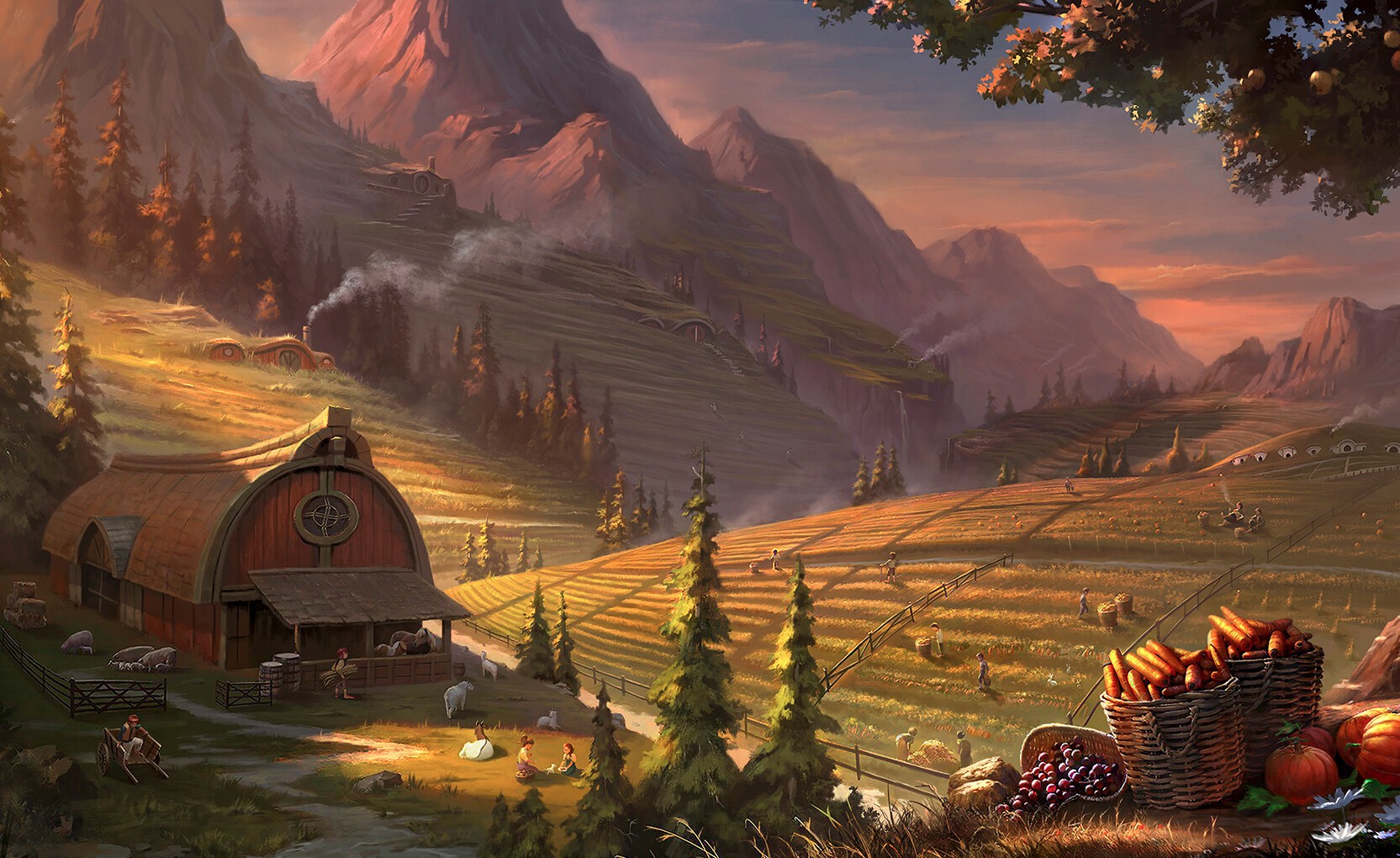Difference between revisions of "Communal Holding"
Tao alexis (talk | contribs) (Created page with "A '''communal holding''' is an area of farmland in possession of a community, equal to 8-10 virgates, or 240-300 acres. The holding is trea...") |
Tao alexis (talk | contribs) |
||
| (2 intermediate revisions by the same user not shown) | |||
| Line 1: | Line 1: | ||
| − | A '''communal holding''' is an area of [[Farmland|farmland]] in possession of a community, equal to 8-10 [[Measurements#Land|virgates]], or 240-300 acres. The holding is treated as a common domain by those who work the fields, sharing out the land and its yield in equal portions and by lot among themselves. A holding may also be part of a manorial [[Demesne|demesne]], with a squire or noble granting common rights over the land to [[Commoner|commoners]] or [[Serfdom|serfs]]. A holding may also exist within a [[Town|town]] or [[City|city]] walls, as a communal garden for the residents, especially in times of siege. Holdings that are privately held are called ''allods''. | + | [[File:Communal Holding.jpg|right|560px|thumb]] |
| + | A '''communal holding''' is an area of [[Farmland|farmland]] in possession of a community, equal to 8-10 [[Measurements#Land|virgates]], or 240-300 acres. The holding is treated as a common domain by those who work the fields, sharing out the land and its yield in equal portions and by lot among themselves. A holding may also be part of a [[Manor|manorial]] [[Demesne|demesne]], with a squire or noble granting common rights over the land to [[Commoner (non-player character)|commoners]] or [[Serfdom|serfs]]. A holding may also exist within a [[Town|town]] or [[City|city]] walls, as a communal garden for the residents, especially in times of siege. Holdings that are privately held are called ''allods''. | ||
Within rural communities, who cannot obtain sufficient manure, the holding's yield begins to fall. At this point the land is given over to grazing and new fields are made ready ... thus the communal holdings surrounding a [[Hamlet|hamlet]] or [[Village|village]] have no fixed placement. When sufficient time has passed, a field restores itself and becomes the main holding again. Within a demesne, the holding moves about inside the manor's environs. A town or city holding is carefully managed and made sustainable through the use of ample composting and manure. | Within rural communities, who cannot obtain sufficient manure, the holding's yield begins to fall. At this point the land is given over to grazing and new fields are made ready ... thus the communal holdings surrounding a [[Hamlet|hamlet]] or [[Village|village]] have no fixed placement. When sufficient time has passed, a field restores itself and becomes the main holding again. Within a demesne, the holding moves about inside the manor's environs. A town or city holding is carefully managed and made sustainable through the use of ample composting and manure. | ||
| + | |||
| + | Hamlets may have only one or two communal holdings nearby; a village may have many. Each is treated as the responsibility of a select group of farmers. | ||
== Activity == | == Activity == | ||
Latest revision as of 17:23, 19 March 2025
A communal holding is an area of farmland in possession of a community, equal to 8-10 virgates, or 240-300 acres. The holding is treated as a common domain by those who work the fields, sharing out the land and its yield in equal portions and by lot among themselves. A holding may also be part of a manorial demesne, with a squire or noble granting common rights over the land to commoners or serfs. A holding may also exist within a town or city walls, as a communal garden for the residents, especially in times of siege. Holdings that are privately held are called allods.
Within rural communities, who cannot obtain sufficient manure, the holding's yield begins to fall. At this point the land is given over to grazing and new fields are made ready ... thus the communal holdings surrounding a hamlet or village have no fixed placement. When sufficient time has passed, a field restores itself and becomes the main holding again. Within a demesne, the holding moves about inside the manor's environs. A town or city holding is carefully managed and made sustainable through the use of ample composting and manure.
Hamlets may have only one or two communal holdings nearby; a village may have many. Each is treated as the responsibility of a select group of farmers.
Activity
Between the time of planting and the harvest, a holding is worked throughout the day by 18-30 workers, mostly adults but supported by elders and even children down to the age of 8. Not all spend the whole day in the holding and there are often not more than two or three at any one time. Once the crops are sown, the intermediary months prior to harvesting are spent weeding, driving off wildlife and pruning as necessary. During harvest, most every farmer attached to the land works constantly, and is even supported by others in the community as an act of solidarity.
A holding is cherished by its workers, even those who don't own it, as it's a matter of life or death for them. It's certain that any movement of persons in or around the holding should be witnessed at once. A message to the larger community will be sent at once, certainly prior to a resident calling out to strangers to learn their business.
See The Adventure
